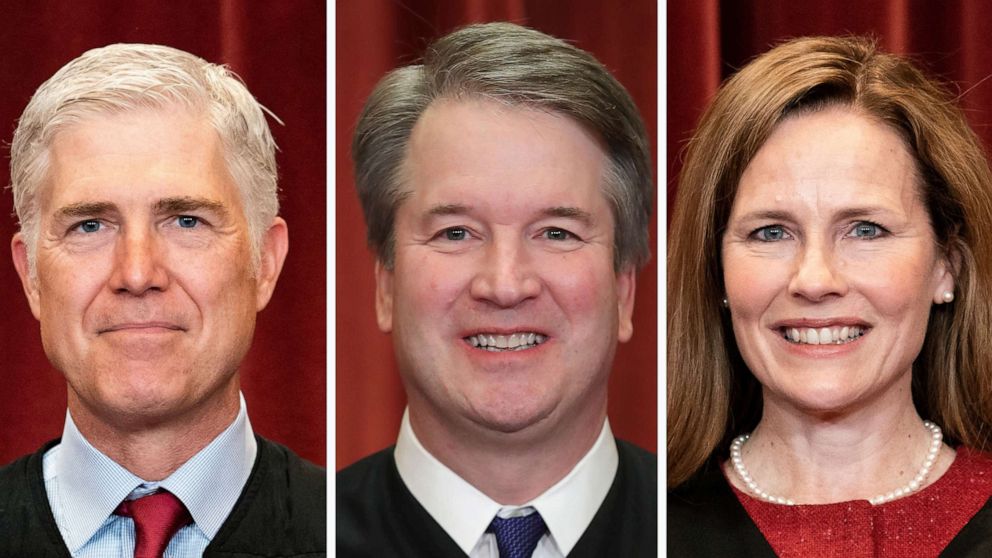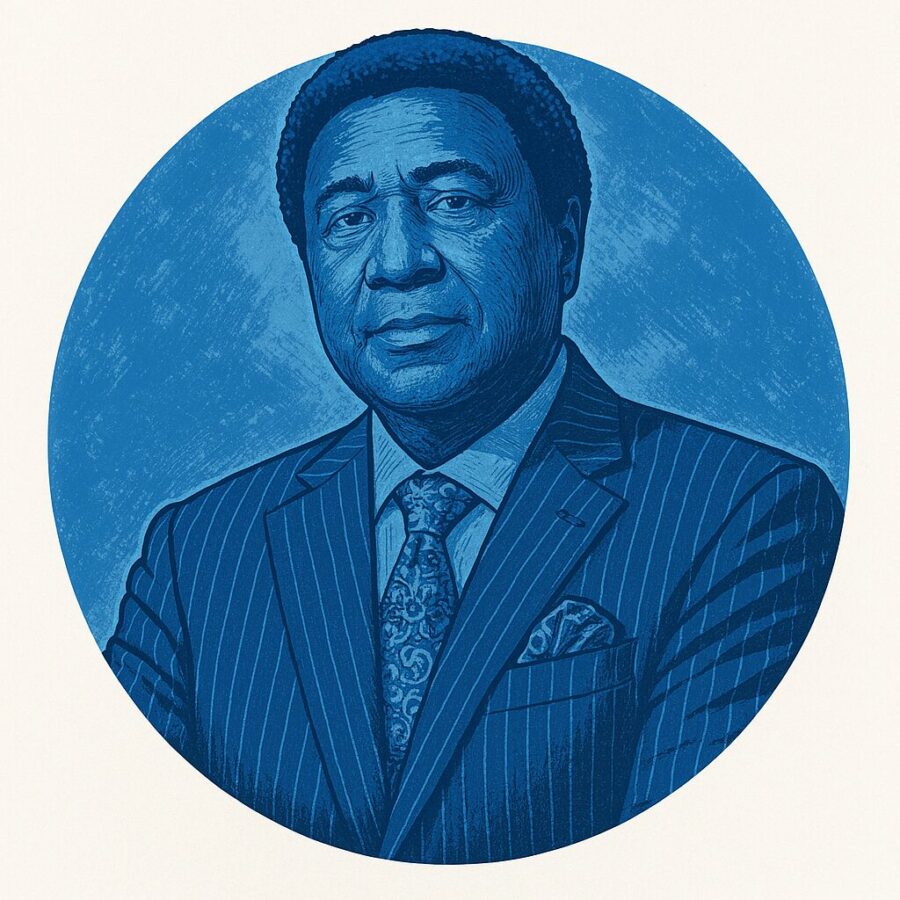List of Federal Judges Appointed by Donald Trump
This comprehensive guide covers all Article III and Article IV United States federal judges appointed by President Donald Trump, along with a selection of Article I federal judicial appointments. Appointments to the District of Columbia judiciary are not included in this overview.
Summary of Appointments
As of October 9, 2025, the United States Senate has confirmed a total of 243 Article III judges nominated by President Trump. This represents a significant impact on the federal judiciary across multiple levels of the court system.
Article III Judges Confirmed
| Court Level | Number of Judges |
|---|---|
| Supreme Court Associate Justices | 3 |
| Courts of Appeals | 57 |
| District Courts | 180 |
| Court of International Trade | 3 |
| Total Article III Judges | 243 |
Current Judicial Vacancies and Pending Nominations
The federal court system currently has several vacancies that need to be filled:
Current Vacancies:
- Courts of Appeals: 2 vacancies
- District Courts: 50 vacancies
- Court of International Trade: 1 vacancy
Announced Future Vacancies:
- Courts of Appeals: 1 expected vacancy
- District Courts: 7 expected vacancies
Pending Nominations:
- Courts of Appeals: 3 nominations awaiting Senate action
- District Courts: 14 nominations awaiting Senate action
President Trump has not made any recess appointments to the federal courts during his tenure.
Article I Court Appointments
Beyond the traditional Article III courts, President Trump has appointed 26 judges to specialized Article I courts:
| Court | Number of Appointments |
|---|---|
| Court of Federal Claims | 10 |
| Tax Court | 7 |
| Court of Appeals for Veterans Claims | 6 |
| Court of Appeals for the Armed Forces | 2 |
| Court of Military Commission Review | 1 |
| Total Article I Appointments | 26 |
Chief Judge Designations for Court of Federal Claims:
- Susan G. Braden
- Margaret M. Sweeney
- Eleni M. Roumel
- Matthew H. Solomson
Current Vacancy: There is one vacancy on the U.S. Tax Court.
Article IV Territorial Court Appointments
President Trump has made one appointment to the Article IV territorial courts. There is currently one vacancy in the territorial court system.
United States Supreme Court
First Administration Appointments
President Trump appointed three associate justices to the Supreme Court of the United States during his first term, all of whom currently serve on the nation’s highest court.
| Justice | Seat | State | Replaced | Nominated | Confirmed | Vote | Service Began | Status |
|---|---|---|---|---|---|---|---|---|
| Neil Gorsuch | 9 | Colorado | Antonin Scalia | Feb 1, 2017 | Apr 7, 2017 | 54–45 | Apr 8, 2017 | Incumbent |
| Brett Kavanaugh | 1 | Maryland | Anthony Kennedy | Jul 10, 2018 | Oct 6, 2018 | 50–48 | Oct 6, 2018 | Incumbent |
| Amy Coney Barrett | 6 | Indiana | Ruth Bader Ginsburg | Sep 29, 2020 | Oct 26, 2020 | 52–48 | Oct 26, 2020 | Incumbent |
Notable Details About Supreme Court Appointments
Neil Gorsuch filled the vacancy left by Justice Antonin Scalia, who passed away in 2016. His confirmation marked the first Supreme Court appointment of the Trump administration.
Brett Kavanaugh replaced Justice Anthony Kennedy following his retirement. The confirmation process was notably close, with a 50–48 vote.
Amy Coney Barrett took the seat previously held by Justice Ruth Bader Ginsburg. She was confirmed shortly before the 2020 presidential election, making her confirmation one of the fastest in modern history.
United States Courts of Appeals
The Courts of Appeals serve as the intermediate appellate courts in the federal system, reviewing decisions from district courts within their geographic circuits.
First Administration Appointments
During his first term, President Trump appointed 54 judges to the federal courts of appeals. These appointments span all circuit courts and represent a diverse range of judicial backgrounds and philosophies.
Appointments by Circuit Court
D.C. Circuit (3 judges):
- Gregory G. Katsas
- Neomi Rao
- Justin R. Walker
First Circuit:
- No appointments during first administration
Second Circuit (5 judges):
- Richard J. Sullivan
- Joseph F. Bianco
- Michael H. Park
- William J. Nardini
- Steven Menashi
Third Circuit (5 judges):
- Stephanos Bibas
- David J. Porter
- Paul Matey
- Peter J. Phipps
- Emil Bove (second administration)
Fourth Circuit (4 judges):
- A. Marvin Quattlebaum Jr.
- Julius N. Richardson
- Allison Jones Rushing
- (Plus Andrew L. Brasher initially nominated to Fourth, confirmed to Eleventh)
Fifth Circuit (7 judges):
- Don Willett
- James C. Ho
- Kyle Duncan
- Kurt D. Engelhardt
- Andrew Oldham
- Cory T. Wilson
- (Plus Andrew L. Brasher)
Sixth Circuit (6 judges):
- Amul Thapar
- John K. Bush
- Joan Larsen
- John Nalbandian
- Chad Readler
- Eric E. Murphy
Seventh Circuit (5 judges):
- Amy Coney Barrett (elevated to Supreme Court in 2020)
- Michael B. Brennan
- Michael Y. Scudder
- Amy St. Eve
- Thomas Kirsch
Eighth Circuit (4 judges):
- Ralph R. Erickson
- L. Steven Grasz
- David Stras
- Jonathan A. Kobes
Ninth Circuit (10 judges):
- Mark J. Bennett
- Ryan D. Nelson
- Eric D. Miller
- Bridget S. Bade
- Kenneth K. Lee
- Daniel P. Collins
- Daniel Bress
- Danielle J. Forrest
- Patrick J. Bumatay
- Lawrence VanDyke
Tenth Circuit (3 judges):
- Allison H. Eid
- Joel M. Carson III
- (Plus one additional appointment)
Eleventh Circuit (6 judges):
- Kevin Newsom
- Elizabeth L. Branch
- Britt Grant
- Robert J. Luck
- Barbara Lagoa
- Andrew L. Brasher
Second Administration Appointments
President Trump has continued making appointments to the courts of appeals in his second term:
| Judge | Circuit | Nominated | Confirmed | Vote | Service Began | Status |
|---|---|---|---|---|---|---|
| Whitney Hermandorfer | Sixth | May 12, 2025 | Jul 14, 2025 | 46–42 | Jul 17, 2025 | Incumbent |
| Emil Bove | Third | Jun 16, 2025 | Jul 29, 2025 | 50–49 | Sep 2, 2025 | Incumbent |
| Jennifer Mascott | Third | Sep 2, 2025 | Oct 9, 2025 | 50–47 | Oct 10, 2025 | Incumbent |
Nominations Awaiting Senate Action
The following nominees are currently pending before the Senate:
| Nominee | Circuit | Nomination Date | Status |
|---|---|---|---|
| Rebecca Taibleson | Seventh | Sep 15, 2025 | Awaiting full Senate confirmation |
| Joshua Dunlap | First | Jul 15, 2025 | Awaiting full Senate confirmation |
| Eric Tung | Ninth | Jul 15, 2025 | Awaiting full Senate confirmation |
United States District Courts
First Administration Impact
President Trump appointed 180 judges to the United States district courts during his first administration. District courts serve as the trial courts of the federal system, handling both civil and criminal cases involving federal law.
These appointments were distributed across all federal judicial districts throughout the country, filling vacancies that arose due to retirements, deaths, or the creation of new judgeships.
Second Administration Progress
Appointments to district courts continue in the second administration, with 14 nominations currently awaiting Senate action. With 50 current vacancies on the district courts, there remain significant opportunities for additional appointments.
United States Court of International Trade
The Court of International Trade is a specialized court that handles cases involving international trade and customs issues.
First Administration Appointments: 3 judges
Current Vacancies: 1
Understanding the Federal Court Structure
Article III Courts
Article III of the U.S. Constitution establishes the federal judiciary. Article III judges receive lifetime appointments and can only be removed through impeachment. This independence is designed to protect the judiciary from political pressure.
Hierarchy:
- Supreme Court (highest court)
- Courts of Appeals (intermediate appellate courts)
- District Courts (trial courts)
- Court of International Trade (specialized jurisdiction)
Article I Courts
Article I courts are established by Congress under its legislative powers rather than under Article III. Judges in these courts may have fixed terms rather than lifetime appointments.
Examples:
- Court of Federal Claims (handles claims against the federal government)
- Tax Court (handles disputes over federal income tax)
- Court of Appeals for Veterans Claims (reviews veterans benefits decisions)
- Court of Appeals for the Armed Forces (military justice appeals)
Article IV Courts
Article IV courts serve U.S. territories and possessions, applying both federal and local territorial law.
Confirmation Process Explained
How Federal Judges Are Appointed
- Presidential Nomination: The President nominates a candidate for a judicial vacancy
- Senate Judiciary Committee Review: The nominee appears before the committee for hearings and questioning
- Committee Vote: The Judiciary Committee votes on whether to advance the nomination to the full Senate
- Senate Floor Vote: The full Senate debates and votes on the nomination
- Confirmation: A simple majority is required for confirmation
- Oath of Office: Upon confirmation, the judge takes the oath and begins service
Confirmation Vote Patterns
The confirmation votes for Trump’s judicial nominees have varied widely:
- Some nominees received overwhelming bipartisan support (90+ votes)
- Others faced narrow confirmations (50–48 or 51–50 votes)
- Vote margins often reflected the judicial philosophy of the nominee and the political composition of the Senate
Historical Context and Significance
Impact on the Federal Judiciary
With 243 Article III judges confirmed, President Trump’s appointments represent approximately one-quarter of all active federal judges. This substantial number of appointments will influence federal court decisions for decades to come, given the lifetime tenure of Article III judges.
Supreme Court Transformation
The three Supreme Court appointments shifted the ideological balance of the nation’s highest court. These justices replaced one conservative justice (Scalia) and two justices considered part of the court’s moderate-to-liberal wing (Kennedy and Ginsburg).
Appeals Court Influence
The 57 appeals court appointments are particularly significant because the courts of appeals are often the final arbiter of federal law, as the Supreme Court hears fewer than 100 cases per year from among thousands of appeals.
Frequently Asked Questions
How many federal judges has Trump appointed in total?
As of October 9, 2025, Trump has appointed 243 Article III judges, 26 Article I judges, and 1 Article IV judge, for a total of 270 federal judicial appointments.
Which president appointed the most federal judges?
While the total numbers vary by length of service, Trump’s appointment pace has been among the highest in modern presidential history, particularly for appeals court judges.
How long do federal judges serve?
Article III judges (Supreme Court, Courts of Appeals, District Courts) serve lifetime appointments. Article I judges may have fixed terms depending on the specific court.
What qualifications are required to become a federal judge?
The Constitution sets no specific qualifications for federal judges. However, all federal judges are attorneys, and most have extensive legal experience as practicing lawyers, law professors, or lower court judges.
Can federal judges be removed from office?
Article III judges can only be removed through impeachment by the House of Representatives and conviction by the Senate. This has happened very rarely in American history.
Additional Resources
For more information about federal courts and the judicial appointment process, visit:
- Administrative Office of the U.S. Courts: uscourts.gov
- Federal Judicial Center: fjc.gov
- United States Senate Judiciary Committee: judiciary.senate.gov




